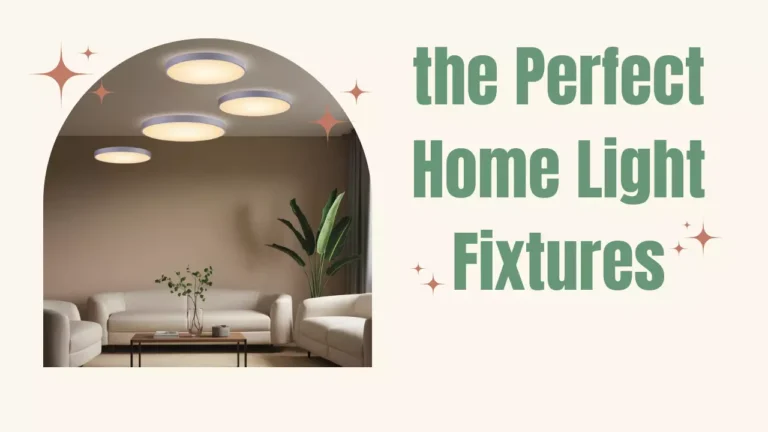Energy-Efficient Lighting: How to Save Money and Reduce Your Carbon Footprint
Energy-efficient lighting is an essential aspect of modern living that offers both economic and environmental benefits. By making the switch to energy-efficient lighting solutions, you can save money on utility bills and significantly reduce your carbon footprint. This article explores various ways to achieve these benefits, provides practical tips, and highlights the importance of making informed lighting choices.
Understanding Energy-Efficient Lighting
Energy-efficient lighting refers to lighting technologies that use less electricity to provide the same amount of light as traditional lighting options. Compact fluorescent lamps (CFLs), light-emitting diodes (LEDs), and halogen incandescent bulbs are popular types of energy-efficient lighting. Each of these options has its unique benefits and applications.
Benefits of Energy-Efficient Lighting
- Cost Savings Energy-efficient lighting solutions can lead to substantial cost savings over time. For instance, LEDs and CFLs use significantly less power than traditional incandescent bulbs. According to the U.S. Department of Energy, switching to LEDs can reduce your lighting energy consumption by up to 75%.
- Longevity Energy-efficient bulbs generally last longer than their traditional counterparts. LEDs, for example, can last up to 25,000 hours, while a standard incandescent bulb might only last 1,000 hours. This extended lifespan means fewer replacements and lower overall costs.
- Reduced Heat Emission Traditional incandescent bulbs release a significant amount of heat, which can contribute to higher cooling costs during hot weather. In contrast, LEDs and CFLs produce minimal heat, helping to maintain a cooler indoor environment.
How Energy-Efficient Lighting Helps Reduce Your Carbon Footprint
By choosing energy-efficient lighting, you contribute to reducing greenhouse gas emissions and minimizing your overall environmental impact. Here’s how:
Lower Energy Consumption
Energy-efficient lighting uses less electricity, which decreases the demand for power plants to generate energy. Since many power plants rely on fossil fuels, reducing electricity usage helps to lower carbon emissions. The Environmental Protection Agency (EPA) states that using energy-efficient lighting can significantly cut down on greenhouse gas emissions.
Decreased Resource Extraction
Manufacturing traditional lighting bulbs requires the extraction and processing of various raw materials, which can be resource-intensive and environmentally damaging. Energy-efficient lighting reduces the need for these resources, contributing to a more sustainable environment.
Minimized Waste
Long-lasting LEDs and CFLs reduce the frequency of bulb replacements, which in turn lowers the volume of waste generated. This reduction in waste helps to lessen the burden on landfills and decreases environmental pollution.
Types of Energy-Efficient Lighting Solutions
Choosing the right type of energy-efficient lighting for your needs involves understanding the different options available. Here’s a closer look at some popular choices:
LED Lights
Light-emitting diodes (LEDs) are among the most efficient lighting options available. They consume up to 80% less energy than traditional incandescent bulbs. Additionally, LEDs offer instant brightness and are available in a variety of color temperatures to suit different settings. According to Energy Star, LEDs are highly durable and can last up to 25 times longer than incandescent bulbs.
CFL Bulbs
Compact fluorescent lamps (CFLs) use about 75% less energy than incandescent bulbs and can last about 10 times longer. They are a good choice for those looking for a cost-effective, energy-saving alternative. However, CFLs contain a small amount of mercury, so proper disposal is essential.
Halogen Incandescents
Halogen incandescent bulbs are a type of energy-efficient incandescent light. They use about 20-30% less energy than traditional incandescent bulbs and have a longer lifespan. While not as efficient as LEDs or CFLs, they offer improved performance compared to standard incandescent bulbs.
Implementing Energy-Efficient Lighting in Your Home
Transitioning to energy-efficient lighting involves a few simple steps. Here’s a practical guide to help you get started:
Assess Your Current Lighting
Begin by evaluating your existing lighting setup. Identify which bulbs can be replaced with energy-efficient alternatives. Make a list of all the bulbs in your home and their wattages to determine potential savings.
Choose the Right Bulbs
Select the appropriate energy-efficient lighting options based on your needs. For example, use LEDs for high-use areas like living rooms and kitchens, and CFLs for less frequently used spaces. Consult the Consumer Reports for comprehensive reviews and recommendations on different lighting products.
Install and Monitor
Once you have chosen your bulbs, install them according to manufacturer instructions. Monitor your energy bills to track the savings and adjust your lighting choices if necessary. The savings from reduced energy consumption will become more apparent over time.
Maintain Proper Disposal
Proper disposal of old bulbs is crucial, especially for CFLs, which contain mercury. Check local regulations for bulb disposal and recycling programs to ensure you are following best practices.
The Future of Energy-Efficient Lighting
As technology continues to advance, energy-efficient lighting solutions are expected to become even more efficient and affordable. Innovations in lighting technology promise to further enhance energy savings and environmental benefits. Staying informed about these developments can help you make the most of future lighting options.
Advancements in LED Technology
New advancements in LED technology include improved color rendering and increased efficiency. Researchers are working on developing LEDs that use even less power and last longer, making them an increasingly attractive option for both residential and commercial applications.
Smart Lighting Solutions
Smart lighting systems allow for greater control over energy use. These systems can be programmed to turn lights on and off based on occupancy, daylight levels, or time of day. Integrating smart lighting into your home can offer additional savings and convenience.
Conclusion
Switching to energy-efficient lighting is a straightforward and impactful way to reduce both your energy bills and carbon footprint. By choosing LEDs, CFLs, or other energy-efficient options, you contribute to a more sustainable future while enjoying the benefits of lower energy consumption and cost savings. Start making changes today, and you’ll soon see the positive effects on both your wallet and the environment.







